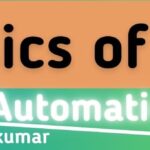
Let’s go through the history of Automation Testing in a structured way:
📌 History of Automation Testing
Automation Testing is the process of using tools and scripts to execute test cases automatically instead of performing them manually. It became popular as software grew in complexity and the need for faster testing increased.
1. 1970s – Early Automation
- Testing was mostly manual in early computing.
- Automation testing began with mainframe and command-line tools.
- Early tools were custom scripts written by developers to automate repetitive tasks.
- Focus was on unit testing and regression testing.
2. 1980s – First Commercial Tools
- Introduction of record-and-playback tools for GUI testing.
- Examples:
- SQA Robot (IBM) – one of the first commercial testing tools.
- Rational Robot – automation for Windows applications.
- Automation was expensive and required programming knowledge.
3. 1990s – Growth of Automation Tools
- Software became more complex with GUIs and client-server applications.
- Popular automation tools emerged:
- WinRunner (Mercury Interactive) – functional testing.
- LoadRunner – performance testing.
- Focus on reducing manual effort in regression testing.
- Automation frameworks started being introduced (e.g., data-driven testing).
4. 2000s – Open Source and Web Testing
- Rise of web applications and cross-browser testing needs.
- Open-source tools became popular:
- Selenium – automated browser testing.
- JUnit/NUnit/TestNG – unit testing frameworks.
- Automation shifted from just regression to continuous testing in development cycles.
5. 2010s – Agile & DevOps Era
- Agile development and DevOps emphasized continuous integration (CI) and continuous testing (CT).
- Test automation became essential to keep up with frequent releases.
- Tools integrated into pipelines: Jenkins, Bamboo, GitLab CI/CD.
- Introduction of BDD tools: Cucumber, SpecFlow for automated behavior-driven testing.
6. 2020s – AI & Intelligent Testing
- AI/ML technologies introduced self-healing tests, test generation, and defect prediction.
- Automation testing now includes:
- AI-driven test automation
- Robotic Process Automation (RPA)
- Cross-platform mobile automation (Appium, Espresso, XCUITest)
- Automation has become faster, smarter, and integral to software delivery.
Summary Timeline
| Era | Key Developments |
|---|---|
| 1970s | Custom scripts for unit/regression testing |
| 1980s | First commercial tools (SQA Robot, Rational Robot) |
| 1990s | WinRunner, LoadRunner; frameworks introduced |
| 2000s | Selenium, JUnit; focus on web and open-source |
| 2010s | Agile/DevOps integration; CI/CD pipelines; BDD tools |
| 2020s | AI/ML-driven testing, RPA, mobile automation |
✅ In short:
Automation Testing evolved from manual scripts in the 1970s → commercial tools in the 1980s → open-source web tools in the 2000s → Agile/DevOps integration in 2010s → AI-driven testing in 2020s.
It has become essential for fast, reliable, and continuous software delivery.






